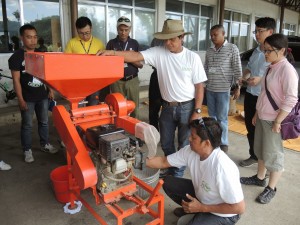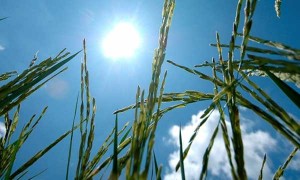Chinese agriculture experts are in major grain-producing provinces in southern China to address potential crop failures to the nation’s autumn rice harvest caused by continuous heat waves.
Heat waves have caused droughts affecting rain-fed rice farms in most parts of the region.
The weather condition started last month and is expected to continue for the next two weeks.
Read the story @Inquirer
More on managing drought in rice production:
Tolerant varieties and application of nutrients can effectively manage drought stress in rice
Drought incidence in rain-fed areas is the major abiotic stress especially to rice growing in around 23 million ha areas in India, the dry spells of different intensities will be more common in coming years due to climate change. Our 2-year study revealed that besides the use of tolerant cultivars, the application of nutrients also helped the rice plants to overcome the drought stress and its after-effects.
How rice plants “manage” water under drought
Because of low rainfall and lack of irrigation infrastructure, water management is often not an option for rainfed lowland rice farmers. But, thanks to the latest rice breeding research, recently developed varieties that produce higher yield under drought have their own built-in water management strategy. These plants can capture and use water more effectively when it is limited. By planting these drought-tolerant varieties, rainfed rice farmers can take advantage of the limited amounts of water in their fields that otherwise would not be accessible if drought-susceptible varieties were grown.
Climate change-ready rice
IRRI has developed drought-tolerant varieties which have been released in several countries and are now being planted by farmers. These include Sahbhagi Dhan in India, the Sahod Ulan in the Philippines, and the Sookha Dhan varieties in Nepal. Across these varieties, the average yield advantage of drought-tolerant varieties over drought-susceptible ones is 0.8-1.2 tons per hectare under drought.







